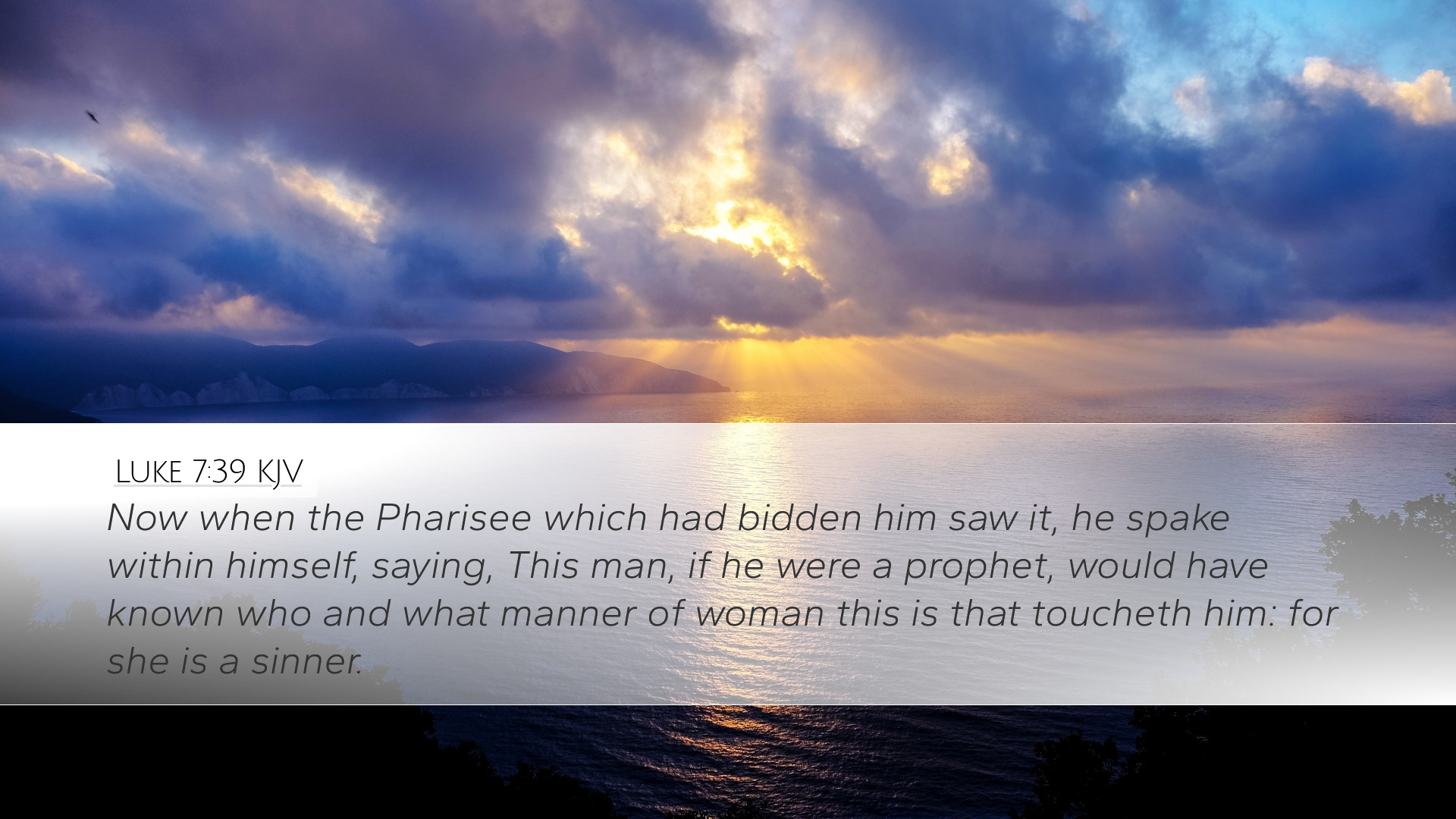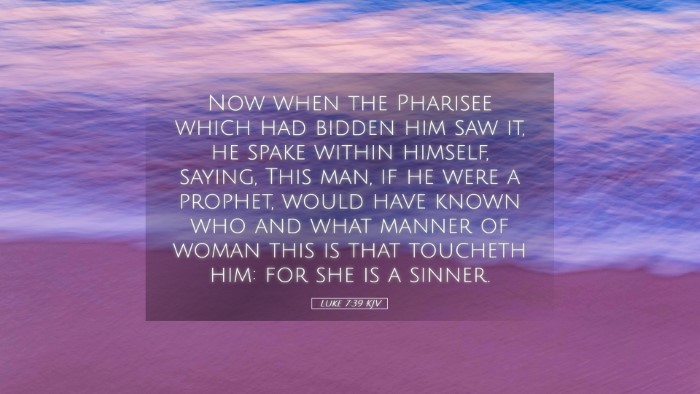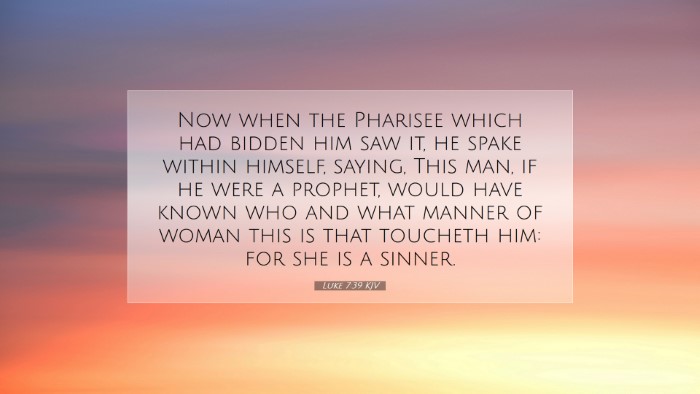Commentary on Luke 7:39
Luke 7:39 states, "Now when the Pharisee which had bidden him saw it, he spake within himself, saying, This man, if he were a prophet, would have known who and what manner of woman this is that toucheth him: for she is a sinner." This verse draws us into a powerful moment of confrontation between the self-righteousness of the Pharisee and the grace of Jesus Christ. Below, we will explore insights from prominent public domain commentaries.
Contextual Analysis
The setting of this verse takes place during a meal at the house of Simon the Pharisee. Jesus is invited to dine, and a woman, described as a sinner, approaches him, illustrating a poignant scene where human depravity meets divine grace.
The Pharisee's Perspective
As Matthew Henry points out, the Pharisee's judgment is rooted in his own assumptions — he believes that if Jesus were truly a prophet, he would discern the sinful nature of the woman touching him. This thought highlights the barriers that self-righteousness creates in understanding grace. Furthermore, this moment emphasizes the stark contrast between the woman's humility in recognizing her need for forgiveness and the Pharisee's haughty dismissal of her.
Judgment in the Heart
Albert Barnes elaborates on the internal dialogue of the Pharisee. He perceived Jesus through the lens of his own piety, suggesting that the Pharisees had an expectation of prophetic insight that verified someone's holiness. This internal judgment against Jesus is crucial; it shows how man's assumptions about righteousness can blind him to the deeper realities of God’s mercy.
The Role of the Sinner
Adam Clarke further explores the identity of the woman, remarking on her possible background and the cultural implications of her actions. Clarke notes that her willingness to enter Simon’s house and approach Jesus demonstrates her desperation for salvation, contrasting sharply with the passive and critical attitude of the Pharisee. Her actions embody the theme of repentance—her touching of Jesus being an act of faith and worship, showing that she understood her need for forgiveness.
Theological Implications
This interaction serves to illustrate several key theological concepts:
- The Nature of Sin: The woman is described simply as a “sinner,” reflecting humanity's universal state apart from grace.
- The Call to Repentance: Her actions model a response to Jesus that is essential for anyone seeking redemption.
- God's Love for the Undeserving: Jesus' ministry is seen in stark contrast to the elitist attitudes of the Pharisees, demonstrating his openness and acceptance of those society deem unworthy.
Contrast of Acceptance
Henry further emphasizes the contrast between the reception of the sinner and the rejection experienced by the self-righteous. This dichotomy serves as a reminder that God’s kingdom is often populated by those who recognize their need for grace rather than those who perceive themselves as righteous.
Application for Believers
For pastors, students, and scholars, this passage invites reflection on the attitudes we carry towards others. Are we more like the Pharisee, quick to judge and criticize, or more like the woman, self-aware and repentant? This scripture encourages a pursuit of genuine humility and an understanding of the universal need for God's grace.
Contemplation and Action
Both the Pharisee and the woman represent two responses to Jesus. The church must ask itself how we treat those who are considered ‘sinners’ in our communities. Are we open to reaching out to those in need, or do we stand on the sidelines judging?”
Conclusion
Luke 7:39 challenges us to reflect on our attitudes and positions before God. It calls for a heart that recognizes its brokenness and rejoices in the grace offered through Christ. In this moment, we see the depth of Christ's compassion compared to the emptiness of self-righteousness, a lesson that remains vitally relevant for contemporary believers.


